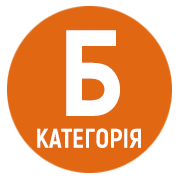TACTICS AND WEAPONS OF THE «PEOPLES OF THE SEA» AS A FACTOR OF THE VICTORY OVER THE EASTERN MEDITERRANEAN CIVILIZATIONS IN 1250–1150 BC
DOI:
https://doi.org/10.32999/ksu2786-5118/2024-48-3Keywords:
ancient world, Iron Age, Bronze Age, invasion of the «peoples of the sea», military art, military technology, weaponsAbstract
The purpose of the article is to substantiate the military victory of the «peoples of the sea» over the peoples of the Eastern Mediterranean in the period 1250-1150 BC. The article examines one of the topical areas of studying the causes, manifestations and consequences of the military invasion of the «peoples of the sea» for the entire Mediterranean region, which led to further changes in the political and cultural landscape of the Eastern Mediterranean at the turn of the Bronze and Iron Ages. Research Methods: The following methods were used in the research process: counterfactual, which allowed us to alternatively present events in the Mediterranean and construct events following the achievements of new Western historiography; historical and comparative methods helped us in reconstructing events and identifying sources; hermeneutic method contributed to an in-depth analysis of foreign and Ukrainian historiography. Results of the study. The review of modern scientific studies of Western and domestic historiography allowed us to consider the problem of the use of military technologies during the migration of the «peoples of the sea». It is noted that the expansion of the «peoples of the sea» contributed to changes not only in the geopolitical map of the world of that time but also in the military, cultural and economic spheres. The active use of infantry combat structure caused a revolution in the military art of the «peoples of the sea» and allowed them to win in the territory of Ancient Greece, in other regions of the ancient world, namely: Anatolia, Cyprus, the Southern Levant, Mesopotamia, Crete, and the Aegean islands. Conclusions. Based on a wide range of sources, it is concluded that the emergence of iron weapons of the «peoples of the sea», even possibly among the ancient Greeks who participated in the battle, contributed to great victories over the peoples of the Eastern Mediterranean of the studied period. The proto-phalanxes, armed with round shields and protected by bronze armour and daggers, faced with chariots and archers, could win by using protective armour and iron swords and spears. They became an impenetrable wall for the chariots of the Bronze Age.
References
Залізняк Л.Л. Надчорноморські індоєвропейці в Трої. Археологія. 2018. № 4. С. 21–27.
Клочко В.І. «Народи моря» та північне Причорномор'я. Археологія. 1990. № 1. С. 10–17.
Матвієнко Л.В. Населення степового Побужжя в історичних походах «Народів моря». Наукові праці. Серія «Історія». 2010. № 120(107). С. 58–62.
Отрощенко В.В. Троя в дискурсі української археології. Археологія. 2018. № 4. С. 5–10.
Cline Eric H. 1177 B.C.: the year civilization collapsed. New Jersi: Princeton University Press. 2014. 265 p.
Drews Robert. The End of The Bronze Age: Changes in Warfare and the Catastrophe ca 1200 BC. New Jersi: Princeton University Press. 1993. 252 р.
Elliot Simon. Old Testament Warriors: The Clash of Cultures in the Ancient Near East. Casemate. 2021. 160 p.
Emanuel J.P. Black Ships and Sea Raiders: History, Archaeology, and Odyssey in the Late Bronze–Early Iron Age. TraLexington Books, 2017. 228 р.
Gilbert Gregory Phillip. Ancient Egyptian Sea Power and the Origin of Maritime Forces. Sea Power Centre-Australia, Department of Defense. 2008. 164 p.
Sandars Nancy K. The Sea Peoples. Warriors of the Ancient Mediterranean, 1250-1150 B.C. London: Thames and Hudson. 1985. 224 p.



